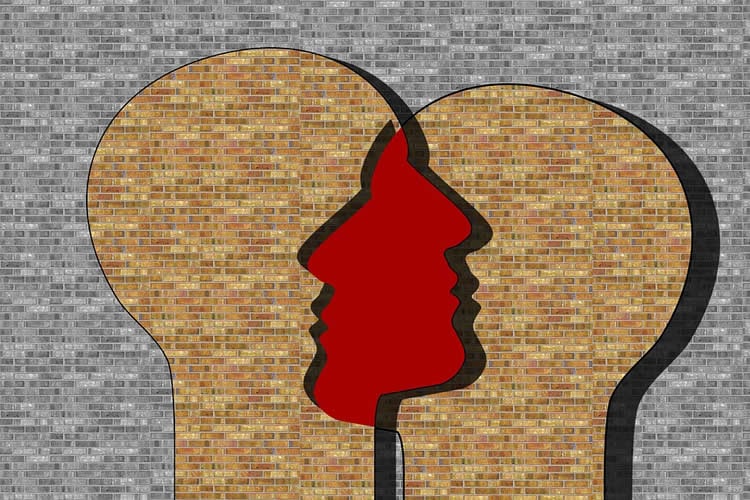Summary: A new study reports our ability to empathize with those in pain is grounded in cognitive neural processes rather than sensory processes.
Source: University of Colorado at Boulder.
The ability to understand and empathize with others’ pain is grounded in cognitive neural processes rather than sensory ones, according to the results of a new study led by University of Colorado Boulder researchers.
The findings show that the act of perceiving others’ pain (i.e., empathy for others’ pain) does not appear to involve the same neural circuitry as experiencing pain in one’s own body, suggesting that they are different interactions within the brain.
“The research suggests that empathy is a deliberative process that requires taking another person’s perspective rather than being an instinctive, automatic process,” said Tor Wager, the senior author of the study, director of the Cognitive and Affective Neuroscience Laboratory and Professor of Psychology and Neuroscience at CU-Boulder.
A study detailing the results was published online today in the journal eLife.
Empathy is a key cornerstone of human social behavior, but the complex neural interactions underlying this behavior are not yet fully understood. Previous hypotheses have suggested that the same brain regions that allow humans to feel pain in their own bodies might activate when perceiving the pain of others.
To test this idea, the researchers compared patterns of brain activity in human volunteers as they experienced moderate pain directly (via heat, shock, or pressure) in one experimental session, and watched images of others’ hands or feet being injured in another experimental session. When volunteers watched images, they were asked to try to imagine that the injuries were happening to their own bodies.
The researchers found that the brain patterns when the volunteers observed pain did not overlap with the brain patterns when the volunteers experienced pain themselves. Instead, while observing pain, the volunteers showed brain patterns consistent with mentalizing, which involves imagining another person’s thoughts and intentions.
The results suggest that within the brain, the experience of observing someone else in pain is neurologically distinct from that of experiencing physical pain oneself.
“Most previous studies focused only on the points of similarity between these two distinct experiences in a few isolated brain regions while ignoring dissimilarities. Our new study used a more granular analysis method,” said Anjali Krishnan, the lead author of the study and a post-doctoral research associate in the Institute of Cognitive Science at CU-Boulder while the research was conducted. She is currently an assistant professor at Brooklyn College of the City University of New York.

This new analysis method identified an empathy-predictive brain pattern that can be applied to new individuals to obtain a brain-related ‘vicarious pain score,’ opening new possibilities for measuring the strength of activity in brain systems that contribute to empathy.
The results may open new avenues of inquiry into how the brain regions involved in empathy help humans to relate to others when they experience different types of pain. Future studies may also explore the factors that influence one’s ability to adopt another’s perspective and whether it might be possible to improve this ability.
Co-authors of the new research include Choong-Wan Woo and Marina López-Solà of CU-Boulder; Luke Chang of Dartmouth College; Luka Ruzic of Duke University; Xiaosi Gu of the University of Texas at Dallas; Philip Jackson of Université Laval (Canada); Jesús Pujol of Hospital del Mar (Spain); and Jin Fan of Queens College of the City University of New York.
Funding: The National Institutes of Health (NIH) provided funding for the study.
Source: Anjali Krishnan – University of Colorado at Boulder
Image Source: This NeuroscienceNews image is in the public domain.
Original Research: Full open access research for “Somatic and vicarious pain are represented by dissociable multivariate brain patterns” by Anjali Krishnan, Choong-Wan Woo, Luke J Chang, Luka Ruzic, Xiaosi Gu, Marina López-Solà, Philip L Jackson, Jesús Pujol, Jin Fan, and Tor D Wager in eLife. Published online June 14 2016 doi:10.7554/eLife.15166
[cbtabs][cbtab title=”MLA”]University of Colorado at Boulder. “Empathy For Other’s Pain Rooted in Cognition Rather Than Sensation .” NeuroscienceNews. NeuroscienceNews, 14 June 2016.
<https://neurosciencenews.com/pain-cognition-empathy-4464/>.[/cbtab][cbtab title=”University of Colorado at Boulder”]University of Colorado at Boulder. (2016, June 14). Empathy For Other’s Pain Rooted in Cognition Rather Than Sensation . NeuroscienceNews. Retrieved June 14, 2016 from https://neurosciencenews.com/pain-cognition-empathy-4464/[/cbtab][cbtab title=”Chicago”]University of Colorado at Boulder. “Empathy For Other’s Pain Rooted in Cognition Rather Than Sensation .” https://neurosciencenews.com/pain-cognition-empathy-4464/ (accessed June 14, 2016).[/cbtab][/cbtabs]
Abstract
Somatic and vicarious pain are represented by dissociable multivariate brain patterns
Understanding how humans represent others’ pain is critical for understanding pro-social behavior. ‘Shared experience’ theories propose common brain representations for somatic and vicarious pain, but other evidence suggests that specialized circuits are required to experience others’ suffering. Combining functional neuroimaging with multivariate pattern analyses, we identified dissociable patterns that predicted somatic (high versus low: 100%) and vicarious (high versus low: 100%) pain intensity in out-of-sample individuals. Critically, each pattern was at chance in predicting the other experience, demonstrating separate modifiability of both patterns. Somatotopy (upper versus lower limb: 93% accuracy for both conditions) was also distinct, located in somatosensory versus mentalizing-related circuits for somatic and vicarious pain, respectively. Two additional studies demonstrated the generalizability of the somatic pain pattern (which was originally developed on thermal pain) to mechanical and electrical pain, and also demonstrated the replicability of the somatic/vicarious dissociation. These findings suggest possible mechanisms underlying limitations in feeling others’ pain, and present new, more specific, brain targets for studying pain empathy.
“Somatic and vicarious pain are represented by dissociable multivariate brain patterns” by Anjali Krishnan, Choong-Wan Woo, Luke J Chang, Luka Ruzic, Xiaosi Gu, Marina López-Solà, Philip L Jackson, Jesús Pujol, Jin Fan, and Tor D Wager in eLife. Published online June 14 2016 doi:10.7554/eLife.15166







